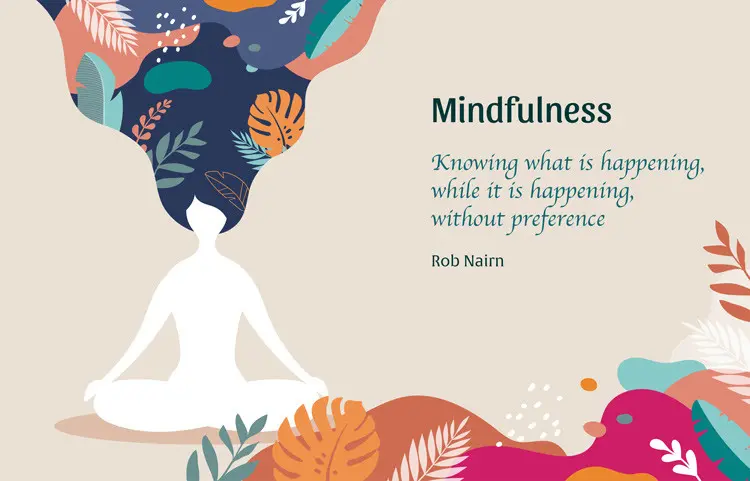Introduction
Meditation, an ancient practice that spans across cultures and religions, has gained immense popularity in recent times due to its profound effects on mental, emotional, and physical well-being. Rooted in mindfulness and self-awareness, meditation offers a powerful tool to navigate the challenges of modern life and cultivate inner peace. This article explores the diverse forms of meditation, its historical origins, scientific evidence of its benefits, and practical techniques to incorporate this transformative practice into daily life.
I. Understanding Meditation: A Journey Within
At its core, meditation is a practice that involves training the mind to focus and redirect thoughts, cultivating a sense of inner calm and awareness. It provides an opportunity to observe thoughts and emotions without judgment, allowing individuals to understand themselves better and develop a deeper connection with their inner selves.
II. The Historical Roots of Meditation: From Ancient Traditions to Modern Practice
Meditation’s origins can be traced back thousands of years to ancient civilizations in India, China, and other parts of the world. Early practitioners sought spiritual enlightenment and a deeper understanding of the human experience through meditative practices. Over time, meditation techniques spread to different cultures and religions, adapting to various beliefs and contexts.
III. The Science of Meditation: Unraveling its Benefits
Scientific research on meditation has flourished in recent decades, providing empirical evidence of its positive effects on the brain and body. Studies have shown that regular meditation can reduce stress, anxiety, and symptoms of depression. It can also improve attention, memory, and emotional regulation, making it a valuable tool for enhancing overall well-being.
IV. Different Types of Meditation: Exploring the Pathways to Peace
Meditation encompasses a variety of practices, each offering unique benefits and approaches to self-discovery. From mindfulness meditation and loving-kindness meditation to transcendental meditation and yoga meditation, individuals can choose a style that resonates with their preferences and intentions.
V. Mindfulness Meditation: Cultivating Present-Moment Awareness
Mindfulness meditation, inspired by Buddhist traditions, involves paying non-judgmental attention to the present moment. By grounding ourselves in the here and now, we can reduce stress and anxiety while increasing our capacity for acceptance and resilience.
VI. Loving-Kindness Meditation: Cultivating Compassion
Loving-kindness meditation, also known as Metta meditation, focuses on sending love and compassion to oneself and others. This practice fosters empathy, reduces feelings of isolation, and promotes a sense of interconnectedness and goodwill.
VII. Transcendental Meditation: Reaching Inner Silence
Transcendental Meditation (TM) is a technique that aims to reach a state of deep inner silence and self-awareness through the repetition of a mantra. Practitioners of TM report reduced stress, improved focus, and enhanced creativity.
VIII. Yoga and Meditation: The Union of Body and Mind
Yoga, an ancient practice originating in India, combines physical postures (asanas) with breath control and meditation. The integration of yoga and meditation promotes physical strength, flexibility, and mental clarity.
IX. Incorporating Meditation into Daily Life: Practical Tips
While formal meditation sessions are beneficial, weaving mindfulness into daily life can have a profound impact on overall well-being. Incorporating short mindfulness breaks, mindful eating, and mindful listening are simple yet effective ways to cultivate present-moment awareness in daily activities.
X. Meditation and Stress Reduction: Navigating Life’s Challenges
In the face of stress and adversity, meditation provides a refuge of calm and resilience. By fostering a greater awareness of thoughts and emotions, individuals can respond to stressful situations with greater clarity and emotional regulation.
XI. Meditation for Emotional Healing: Processing and Letting Go
Meditation can be a powerful tool for emotional healing, helping individuals process past traumas and release negative emotions. By cultivating self-compassion and self-acceptance, meditation facilitates the journey towards emotional well-being.
XII. Meditation and Physical Health: Nurturing the Mind-Body Connection
The mind and body are interconnected, and meditation’s positive effects on mental health often extend to physical health. Regular meditation has been linked to reduced blood pressure, improved sleep, and enhanced immune function.
XIII. Challenges and Pitfalls in Meditation Practice: Overcoming Obstacles
While meditation can be transformative, beginners may encounter challenges such as restlessness, distractions, and feelings of frustration. Understanding that these obstacles are a natural part of the journey can help individuals stay committed to their practice.
XIV. The Role of Meditation in Self-Discovery and Personal Growth
Meditation offers a profound path to self-discovery, allowing individuals to explore their inner landscape, identify patterns, and develop greater self-awareness. Through self-reflection and contemplation, meditation becomes a tool for personal growth and transformation.
Conclusion
Meditation is a timeless practice that holds the potential to bring about profound positive changes in our lives. Whether seeking inner peace, emotional healing, or improved focus, meditation offers a versatile and accessible path to well-being. By embracing the diversity of meditation styles and integrating mindfulness into our daily routines, we can tap into the power of this ancient practice to navigate the complexities of modern life and nurture a sense of inner calm, presence, and self-awareness.






